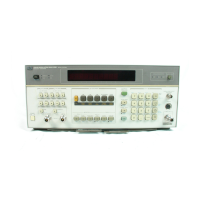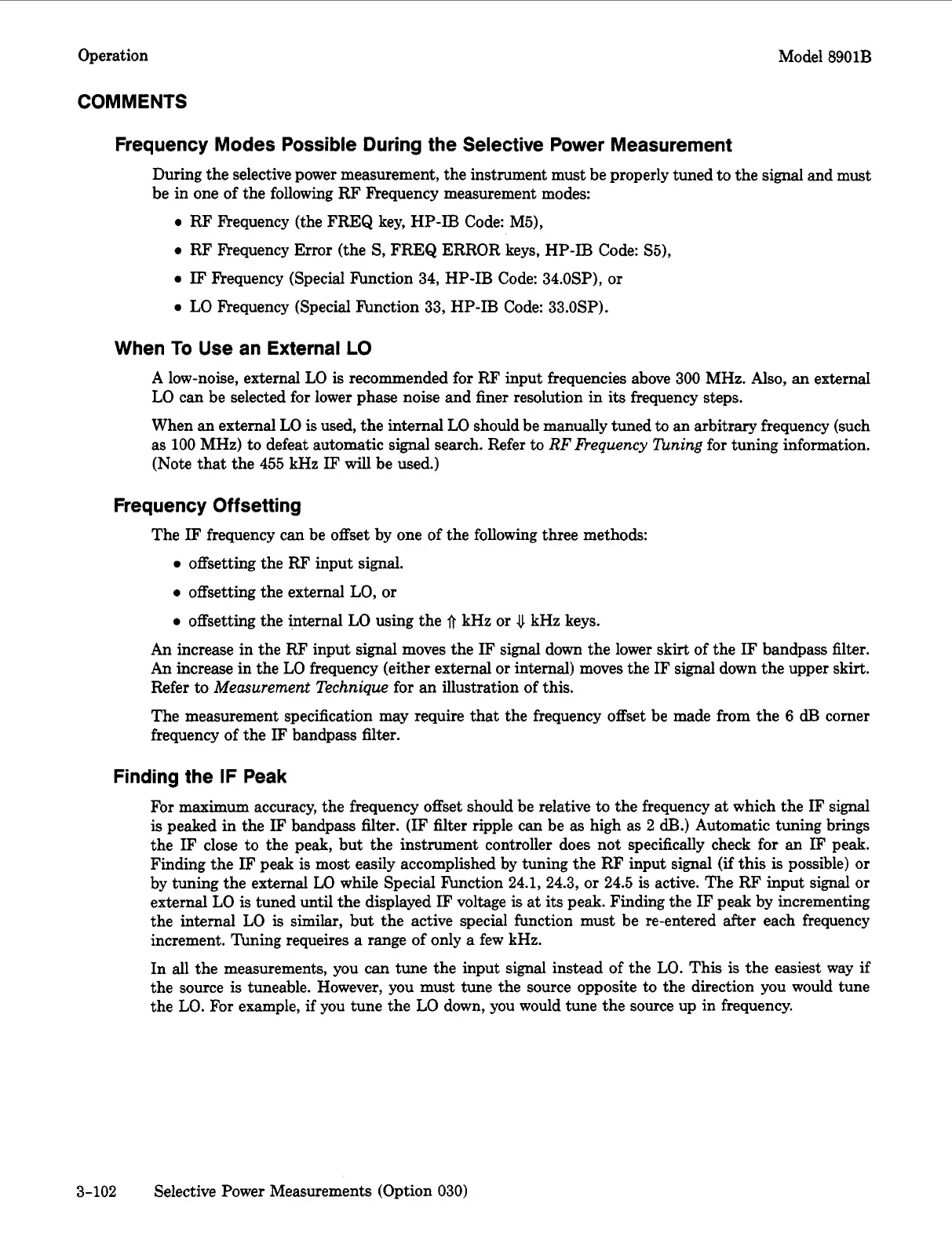Operation Model 8901B
COMMENTS
Frequency Modes Possible During the Selective Power Measurement
During the selective power measurement, the instrument must be properly tuned to the signal and must
be in one of the following RF Frequency measurement modes:
0
RF Frequency (the FREQ key, HP-IB Code: M5),
0
RF Frequency Error (the
S,
FREQ ERROR keys, HP-IB Code:
S5),
0
IF
Frequency (Special Function 34, HP-IB Code: 34.0SP),
or
0
LO
Frequency (Special Function 33, HP-IB Code: 33.0SP).
When To Use an External
LO
A
low-noise, external
LO
is
recommended for RF input frequencies above 300 MHz.
Also,
an external
LO
can be selected for lower phase noise and finer resolution in
its
frequency steps.
When an external
LO
is
used, the internal
LO
should be manually tuned
to
an
arbitrary frequency (such
as
100
MHz) to defeat automatic signal search. Refer
to
RF
Frequency 7Lning
for tuning information.
(Note that the 455 kHz
IF
will be used.)
Frequency Offsetting
The
IF
frequency can be offset by one of the following three methods:
0
offsetting the RF input signal.
0
offsetting the external
LO,
or
0
offsetting the internal
LO
using the
fi
kHz
or
4)
kHz keys.
An
increase in the RF input signal moves the
IF
signal down the lower skirt of the
IF
bandpass filter.
An
increase in the
LO
frequency (either external
or
internal) moves the
IF
signal down the upper skirt.
Refer
to
Measurement Technique
for an illustration of this.
The measurement specification may require that the frequency offset be made from the
6
dB
corner
frequency of the
IF
bandpass filter.
Finding the IF Peak
For maximum accuracy, the frequency offset should be relative
to
the frequency at which the IF signal
is
peaked in the IF bandpass filter.
(IF
filter ripple can be
as
high as
2
B.)
Automatic tuning brings
the
IF
close to the peak, but the instrument controller does not specifically check for
an
IF peak.
Finding the
IF
peak is most easily accomplished by tuning the RF input signal
(if
this
is
possible)
or
by tuning the external
LO
while Special Function 24.1, 24.3,
or
24.5
is
active. The RF input signal
or
external
LO
is
tuned until the displayed
IF
voltage
is
at
its
peak. Finding the IF peak by incrementing
the internal
LO
is similar, but the active special function must be re-entered
after
each frequency
increment. Tuning requeires
a
range of only a few kHz.
In all the measurements, you can tune the input signal instead of the
LO.
This is the easiest way
if
the source
is
tuneable. However, you must tune the source opposite to the direction you would tune
the
LO.
For example, if you tune the
LO
down, you would tune the source up in frequency.
3-102
Selective Power Measurements (Option 030)

